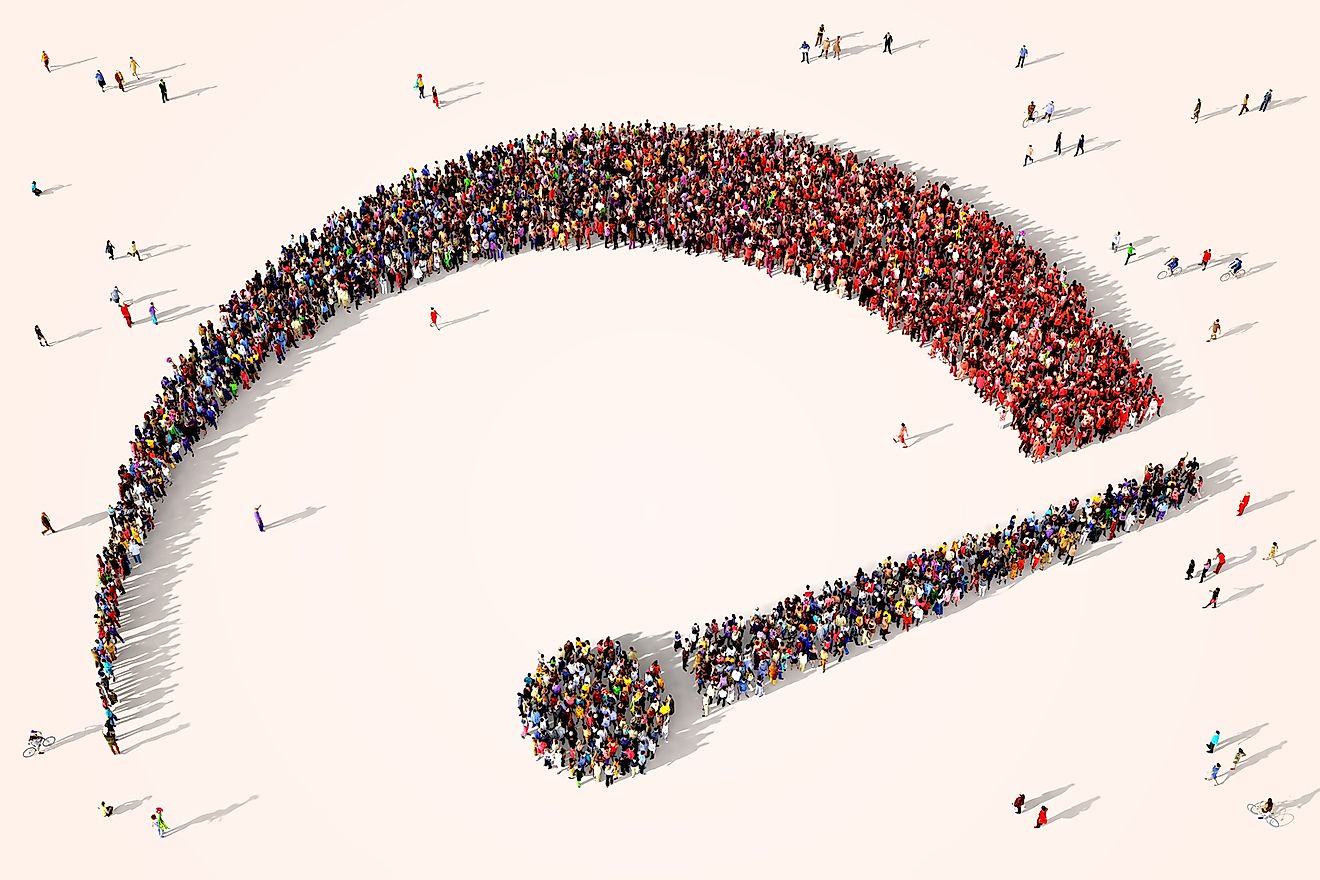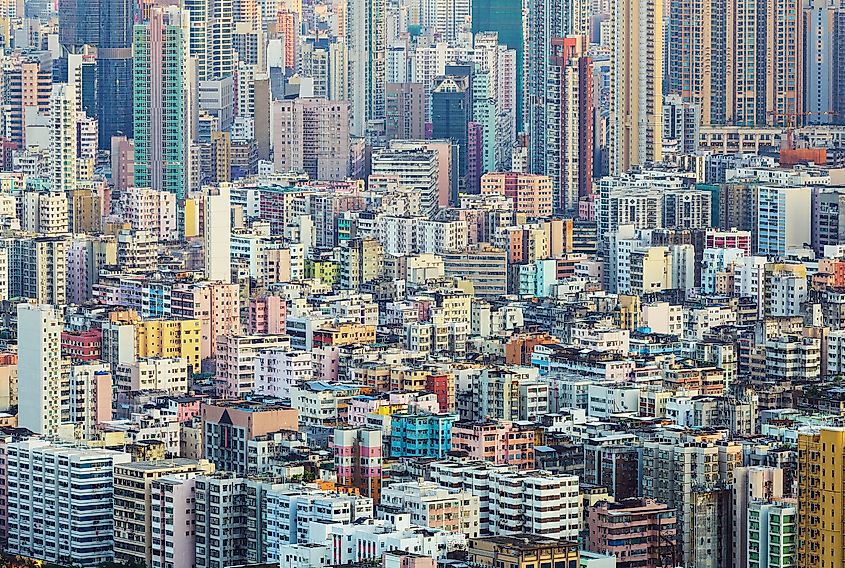Will The Human Population Keep Growing Forever?

- The Earth's population is expected to peak around 2100 at 11 billion people, and to shrink a bit in the years going forward.
- The US is one of nine countries predicted to produce more than half of the population growth on Earth from now until 2050.
- The world's population increased in small consistent steps until the industrial revolution hit, causing life expectancies to soar, and populations to surge.
Some things really seem like they could keep on growing forever. Inflation, grandpa’s nose hairs, the universe- they can truly feel infinite. What about the Earth’s human population, however? Today, our planet is home to around 7.8 billion people. In 2015, 141 million babies were born, and an estimated 57 million people died. In fact, about 140 people are said to be born every minute. Our world does seem to be growing more and more populous every year, but statistical predictions show that this will not be the case until the end of time. Experts predict that by 2100, Earth’s human population will almost stabilize and stop increasing in size once it hits 11 billion. This is due mostly to global fertility decreasing and the overall population aging.
It is true that it can be difficult to predict what may happen one thousand years from now. It could be that we reach a breaking point in population, and that we keep dropping down from this number and cycling back up to it, as time goes on, in recurring upwards and downwards cycles. What is interesting to look at is where we have come from, and where the growing and shrinking populations of this century are predicted to be.
A History Of The World’s Population Growth
It is really only in recent centuries that the human population on Earth has blossomed with vigor. If we go back far enough, we can trace how we have grown up to our present numbers. According to historians, back in 8000 B.C, Earth was home to as few as 5 million people. (How we got to this point is up for some debate. Some say we are descended from one couple in Africa and others argue that this is certainly not what happened for a plethora of reasons).
Anyways, 5 million people is roughly the same amount of souls who currently live in the state of Alabama, so for an entire global population, it is obviously small. It was at this time that humanity changed from hunting and gathering, to farming land in order to survive.
If we then move forwards in history, by 1 A.D, which was thousands of years later, our global population reached about 200 million. This is a bit less than the present day population of Brazil. By this point, the human population was increasing slowly, by about 0.05 percent annually. Records show that our numbers continued to grow this way for many years, only to be set back somewhat when major events like the Black Death, (or bubonic plague), killed us off en masse. It was when the Industrial Revolution finally came, that our population really began to explode. This was due in part to advancements in medicine that saw our life expectancy climb much higher, and fewer children die before reaching adulthood.
By 1800, there were 1 billion people on the globe, and between the year 1700 and 2000 the human population on Earth actually increased by a factor of ten. In some ways, it was at this time that the population snowball really started rolling downhill.
Today, the number of people on the planet is increasing at an annual rate of 1.1 percent, which sounds very tiny but actually is quite a lot of growth given our present numbers.
Booming And Shrinking

Not every country on Earth is growing in the same way. Some places still have booming native populations, while others are relying on immigration to stay afloat, and some others still are shrinking. According to the United Nations, population projections indicate that just nine countries will produce more than half of the predicted population growth on Earth from now until 2050. In descending order of increase, these countries are India, Nigeria, Pakistan, the Democratic Republic of the Congo, Ethiopia, the United Republic of Tanzania, Indonesia, Egypt and the US. Very soon, analysts predict that India’s population will overtake that of China. This change is expected to take place around 2027. At the time of this writing, China’s population is a little less than 1.4 billion, and India’s is 1.35 billion. Together, these countries presently account for about 36% of the world’s entire population.
In contrast, some countries are experiencing a marked drop in their population. According to Statista.com, Cook Islands leads the way with a population decline rate of 2.79%, followed by Puerto Rico (1.74%), American Samoa (1.3%), Lebanon (1.1%), Saint Pierre and Miquelon (1.08%), Latvia (1.08%), Lithuania (1.08%), Moldova (1.05%), Bulgaria (0.61%) and Estonia (0.57%). The reasons these countries are shrinking are varied but most are experiencing a lack of opportunities for the younger generations, encouraging people to emigrate in search of a promising future. According to the UN, China is now the world’s largest country by population but its numbers are expected to decrease by 31.4 million, around 2.2 % from 2019 to 2050.
Do We Have Enough Resources?

Many experts fear that Earth’s population growth will create large problems for humanity. The 2014 World Food Prize Symposium labeled growing enough food for Earth’s expanding population “the greatest challenge in human history”. As National Geographic points out, climate change is causing extreme weather to harm our crops, and is disrupting the normal flow of harvests. A study done by the Global Footprint Network found that we currently use the equivalent of 1.5 planets to give us the resources we use and to absorb the waste we produce. In addition, a study completed by the Stockholm Resilience Institute outlined nine planetary boundaries we need to adhere to in order to continue to thrive. Humans have already exceeded three of them however, nitrogen pollution, climate change, and a loss in biodiversity.
Some say education is the key to controlling our population before it controls us. By lifting countries out of poverty and providing education and resources to curb birth rates globally, we can regain control of our planet for the better as we roll into the future.







